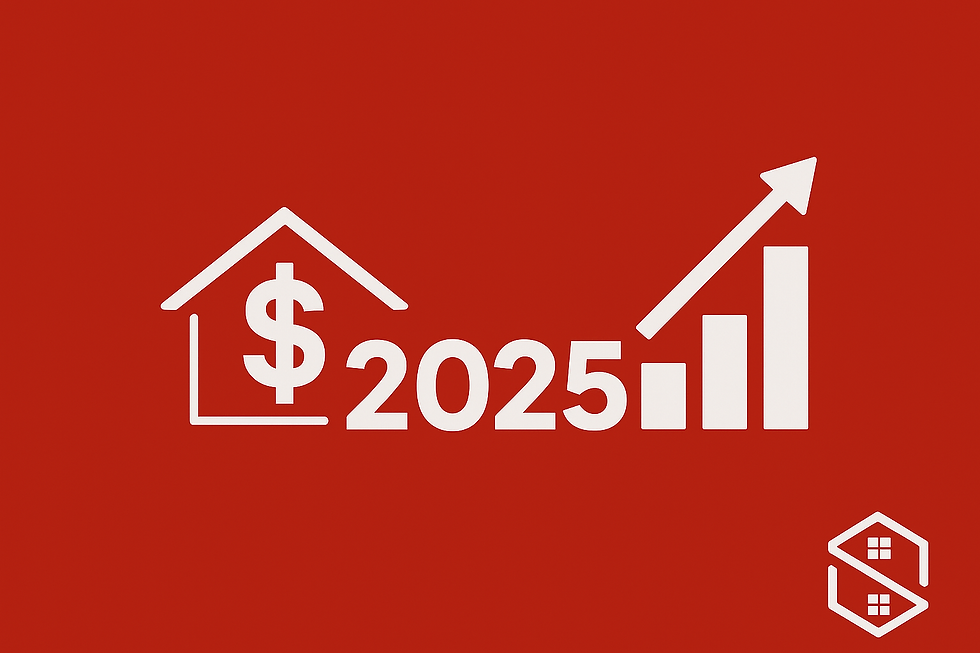Understanding QM vs. Non-QM Loans in a Changing Rate Environment
- StratoBridge Lending
- Oct 10
- 3 min read
As mortgage rates fluctuate across the U.S., borrowers are exploring new ways to secure financing that fits their unique needs. Whether you’re a first-time buyer, self-employed professional, or real estate investor, understanding the difference between Qualified Mortgage (QM) and Non-Qualified Mortgage (Non-QM) loans can help you make a smarter decision in today’s evolving market.
At StratoBridge Lending, we specialize in both QM and Non-QM mortgage solutions — offering the flexibility and transparency borrowers need to succeed, no matter how the rate environment shifts.
What Are Qualified Mortgages (QM)?
A Qualified Mortgage follows strict federal lending standards established by the Consumer Financial Protection Bureau (CFPB). These rules were designed to protect borrowers and promote responsible lending after the 2008 housing crisis.
QM loans are ideal for borrowers with traditional income documentation and strong credit profiles.
Key Features of QM Loans
Full Income Verification: Borrowers must provide W-2s, pay stubs, and tax returns.
DTI Ratio Limits: Most QM loans require a debt-to-income ratio (DTI) below 43%.
Stable Rate Options: Fixed and adjustable-rate programs available with predictable payment schedules.
Lower Risk: Because they follow federal standards, QM loans often offer competitive interest rates and simpler approvals.
Best For: W-2 employees, retirees with fixed income, or anyone with straightforward financial documentation seeking predictable payments and long-term stability.
What Are Non-Qualified Mortgages (Non-QM)?
Non-QM loans were created for borrowers who don’t fit into conventional mortgage underwriting boxes. These loans do not meet all CFPB “qualified” standards, but that doesn’t make them risky — just more flexible.
Non-QM programs are perfect for self-employed individuals, real estate investors, or anyone with complex income streams who still have the ability to repay.
Key Features of Non-QM Loans
Alternative Income Verification: Approval can be based on bank statements, rental income (DSCR), or asset depletion, rather than tax returns.
Flexible DTI Requirements: Lenders can use a more holistic view of your finances.
Custom Terms: Interest-only options, shorter amortization periods, and non-traditional repayment structures available.
Faster Approvals: With fewer restrictions and customized underwriting, approvals can be quicker than standard loans.
Best For: Self-employed borrowers, entrepreneurs, gig-economy professionals, or property investors with strong assets but unconventional income documentation.
How Mortgage Rates Impact QM and Non-QM Loans
Mortgage rates are influenced by broader economic factors such as inflation, the Federal Reserve’s policy decisions, and overall market demand for bonds. However, the impact can differ for QM and Non-QM products:
QM Loan Rates: Usually move in line with conventional benchmarks such as Fannie Mae or Freddie Mac rates. They tend to be lower because they carry less risk for lenders.
Non-QM Loan Rates: May be slightly higher due to increased flexibility and custom underwriting, but the difference often narrows when market competition increases — as seen in today’s environment.
Pro Tip: When rates are trending lower, both QM and Non-QM borrowers can benefit — but Non-QM borrowers often gain extra leverage, since flexible underwriting allows quicker refinancing or restructuring.
Choosing Between QM and Non-QM in a Changing Market
When rates fluctuate, the “right” loan type depends less on timing and more on your financial situation.
Ask yourself:
Do you have traditional income (like W-2 wages or retirement pay)?
Or are you self-employed, earning from business profits, rental income, or investments?
Are you buying a primary home, or expanding your investment portfolio?
If You’re a Traditional Borrower
A QM loan may be your best fit — especially if you value predictable payments and lower upfront costs.
If You’re an Investor or Self-Employed Borrower
A Non-QM loan might offer the flexibility you need to qualify and grow your business. Even with slightly higher rates, the ability to leverage property income or bank statements often outweighs the difference.
How StratoBridge Lending Helps You Decide
At StratoBridge Lending, we simplify the process by helping you compare both QM and Non-QM options — side by side — based on your financial goals.
Here’s how we make it easy:
Real-Time Rate Estimates: Instantly explore today’s QM and Non-QM programs on our website.
No-Credit-Impact Loan Scenarios: Get personalized estimates without a credit check.
Investor-Friendly Expertise: We specialize in DSCR, bank-statement, and asset-based lending for property investors.
Focus Markets: We proudly serve borrowers nationwide, with strong expertise in Texas (TX), Colorado (CO), and Pennsylvania (PA).
Whether you’re purchasing your first home or financing a multi-unit investment property, we’ll help you make confident, data-driven decisions.
In today’s shifting rate environment, the best mortgage isn’t just about the lowest rate — it’s about the right fit for your financial situation. QM loans offer stability and structure. Non-QM loans offer flexibility and opportunity.
As rates move up and down, your strategy should focus on long-term flexibility, refinance potential, and loan structure that supports your goals.
Start by checking your real-time mortgage rate estimates





Comments